Ezra Cline, a freshman at the Art Academy, spent his summer working with ArtWorks to craft light-based kinetic sculptures for the BLINK parade. The team created three floats, a rabbit head, a top hat with rotating faces, and a flower train. Ezra also led mask-making workshops for the parade. We sat down for some coffee and talked about life at the Art Academy and his summer of BLINK.
Hey Ezra, so how’s school going, is college life all that you dreamed it would be?
It is all that I dreamed. Being a freshman is pretty fun at the Art Academy. I’ve always wanted access to all these supplies and resources that were just unavailable to me in high school.
Yeah and you’re a bit of a night owl, aren’t you? Have you been spending a lot of time in the building since it’s open to students 24 hours?
Yep, it’s so nice. I get everything done here at night, and very early in the morning, and sometimes I’m here for no real reason at all.
Haha, well maybe you can help me out with a potential series I’m wanting to do at the Academy. The school can be a pretty interesting place at night and I want to try and capture that. I’m thinking of calling it, “Night Owls” or “Nightcrawlers”.
Oh yeah, that’s when all the cool people come out.
So we met in 2016 when I was your teacher on the “New Lines” mural series with ArtWorks. I remember during some routine icebreaker question we asked, “What do want to do for your career”. I believe you said you were thinking about becoming an engineer, but you also mentioned that you find yourself going through a constant identity crisis. So I’ve just been curious about what made you decide to pursue art?
Well, I think everyone should be going through an identity crisis all the time, especially when you’re deciding to be an artist. I’ve flip-flopped between engineer and artist for a lot of my life and honestly, the choice was sort of made for me when I decided not to put much work into my mathematics. Kind of process of elimination but I would say that it was definitely more of a choice.
Do you have an idea of what your focus will be here at the Art Academy?
Major wise I think I’m going to be doing more sculptural things. I think I identify as a maker more than an artist or an engineer.
Cool, let’s talk about Blink then.
Yes, let’s talk about BLINK.
Were you excited when you found out you were placed on the BLINK project?
So much. That was my number one. I was looking at the list of projects and BLINK was one of the only non-mural projects, but also something that was really freaking cool. It was exactly the sort of work that I want to do.
At that time I was working for ArtWorks and was a part of the team placing students to the projects. I remembered the intricately detailed cardboard sculpture you created the summer before of the New Lines studio. I have to say it was a no-brainer to place you on a sculptural project.
Yeah, it’s always good to put a little bit of cardboard into people’s mouths to convince them to hire you.
Cardboard in the mouth, that’s a great strategy.
So there were three BLINK floats?
Yes, we ended up creating a rabbit, a top hat with faces, and a flower train float.
How did you come up with the idea for the floats?
The first week of the BLINK project was dedicated to ideation and planning. We were each given a different copy of Alice in Wonderland to draw inspiration from, but we all wanted to move away from that. You can still see the influence of it in the floats but we tried to take it beyond that.
An apprentice named Joey, that ended up leaving for another job, had actually come up with the idea for a floating rabbit head and I fell in love with it. So after he left I decided that I really liked this idea and I had to convince the group that this was one of the floats we needed to start building. So I took a photo of his sketch, and that night I created a model of the rabbit head. I brought it to work the next day and that propelled the project into the direction of the rabbit.
Sounds like you put some cardboard in their mouth?
Yeah, just put some cardboard in their mouth. Just fill their heads up with cardboard, that’s the sales pitch.
The rabbit also has mechanics to it, right? Was that difficult to figure out?
We were hired to create three-dimensional kinetic sculptures that would move down the street in the dark and delight people on the sidelines. We had to introduce elements of animation and mechanics to it so it was more of a puppet. It’s a weird line we kind of blurred between sculpture and puppet.
We made it so the rabbit head can move its eyes around, flap its ears, and open the mouth. All the wiggle room that we needed to kind of make it wiggle. Those words didn’t make sense.
The wiggle room to make it wiggle, it makes sense to me.
The rabbit head was originally static and as we were working with the materials, PVC piping and sheet plastic, the movement just sort of happened organically. It was a learning process, we didn’t know what we could get those materials to do or move like, so it all happened on its own.
The rabbit head was yourself, Abigail Smart, and Grayson Draper?
Yes. Abigail ended up switching over to the hat project.
The Hat float is wild. Do you have a favorite?
It’s hard to pick a favorite of the three floats. We built a giant rabbit head, the hat float, which is a top hat with an exquisite corpse-like face element to it. All the rings on the hat rotate to create different faces. The last one is a flower train, which was the biggest one, longest one, and hardest one to execute.
What parts are being illuminated?
We designed them to basically be giant lanterns. Illuminating the whole sculpture with an ambient glow allowed us to focus more on the mechanics of the float.
How are they moving? The last time we talked there were a few ideas out there.
Inside the rabbit head, we were planning on having a wheelchair. One person would sit in the chair and be the puppeteer while another could push the chair to navigate. As the weeks went on we realized that we were not going to get a wheelchair. In the heat of the moment, Grayson and I chopped up an old shopping cart that we found.
So how is it moving now that you’re using a chopped up shopping cart, is it being pulled?
The whole thing is on caster wheels and we’re pushing it from the inside.
Oh, so sort of like a Flintstone car?
Yes, we’re Flintstoning it.
Who will be inside the rabbit head?
I think it’s just going to be me and Grayson in there.
What was the most challenging part of working on this project?
The most challenging part of the project was experimenting with different materials and fixing problems as they arose. If a pipe buckled we would need to fix that on the spot and fix it in a way that wouldn’t damage the rest of the structure. Plastic wasn’t the easiest material to work with but it was an efficient and a cost-effective way to construct really amazing looking floats.
Alright so let me ask you an obvious question to follow up, what was your favorite part of the project?
The first time that we put the float on wheels. When we attached it to the casters and got it moving it was loads of fun. The whole team gathered around to see. It was sort of funny but also surreal. There was a tremendous sense of accomplishment.
Sort of a proud parent moment?
It was like witnessing my kid’s first steps.
I asked you earlier what made you choose art as a career path, so what made you go with AAC?
I took a tour a couple years ago and looked into the different studio and shop spaces and kept thinking “wow I could do so much with all the resources in this building”. That was the primary factor. I spend a lot of time planning projects but never got to execute them, I think being in this environment where I can come in 24 hours a day to work on stuff in those studio spaces is just a dream come true.











